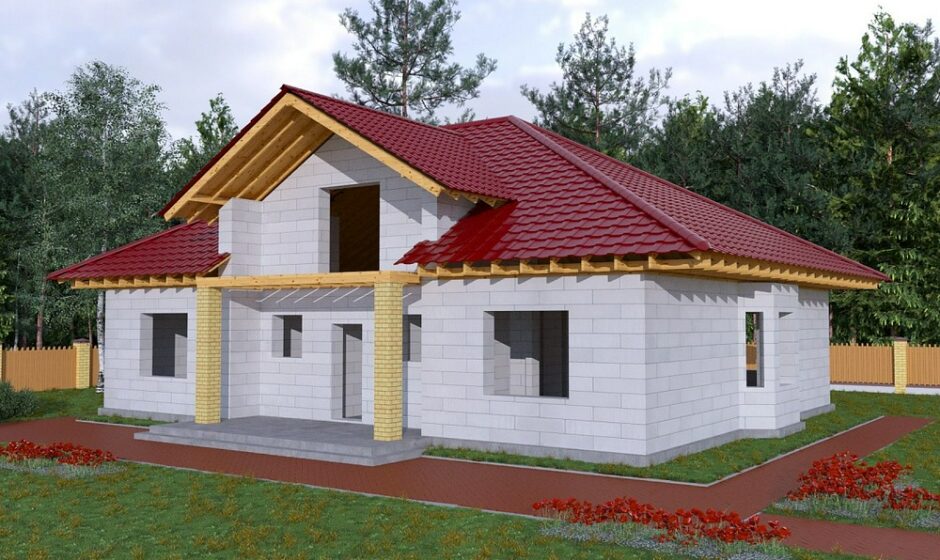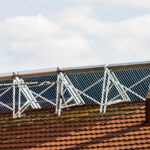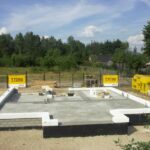How to determine whether aerated concrete is suitable as a wall material for your home?
Is an aerated concrete house good or bad? This is the question that customers most often ask builders. The builders, in turn, respond in a way that suits their interests, but this does not make the truth come out. To answer the question, let’s soberly consider the strengths and weaknesses of the aerated concrete block and determine for which houses this material is suitable.
Content:
- Why is an aerated concrete block criticized?
- Strengths and weaknesses of aerated concrete.
- Where it is not recommended to use aerated concrete blocks.
Why is an aerated concrete block criticized?
On the Internet, many articles and videos are exposing aerated concrete. The main complaints against the material are destruction from exposure to low temperatures and fragility, causing cracks in the walls. In some videos, you can see how aerated concrete collapses under the pressure of floor slabs. Is it the material’s fault and not the builder’s? First things first.

Aerated concrete is a technological material and is a type of cellular concrete. This type of artificial stone is made using gas generators, and it gains strength in an autoclave under the influence of high pressure and steam treatment. In simple terms, aerated concrete is foamed hardened concrete, inside of which air pores are formed, giving the material lightness and high thermal insulation qualities.
In this case, we are talking about autoclaved aerated concrete, which is recommended for construction. The fact is that there is also a non-autoclaved aerated concrete block, which can be produced at home. It is precisely this block that causes many troubles since production technology is not fully observed in handicraft industries. Such a block, unlike the factory one, is always far from the declared characteristics and has a broken geometry.
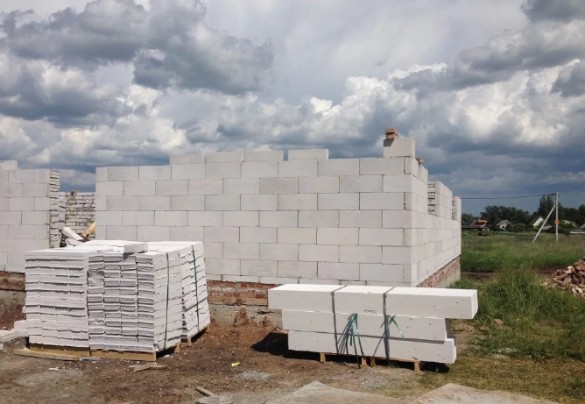
Like any technological material, aerated concrete is demanding to use. When using this building material, you need to know the areas of its application and the factors leading to its destruction.
About low temperatures
The most common complaint about building materials is their destruction in frost. Such cases happen, but the stone cannot be blamed here, since serious mistakes are made when working with it.
Aerated concrete is usually delivered to the construction site with an excessive amount of moisture, and it begins to dry when the walls have already been erected. Also, when laying, moisture from the solution gets into the gas block. When working with aerated concrete, many craftsmen spill water on it for better adhesion, and this water ends up inside the wall.
If you do not allow the wall to dry and trap moisture inside, then you should expect unpleasant consequences. With the onset of frosty weather, such a wall will freeze, turning water into ice, which will lead to delamination and destruction of the outer part of the structure. Locking moisture inside the wall is one of the main violations of the rules for using aerated concrete.
The masonry can be considered dry and ready for further finishing after at least two seasons. Before this period expires, it is not recommended to carry out repairs or finishing works that affect the vapor permeability of the walls.
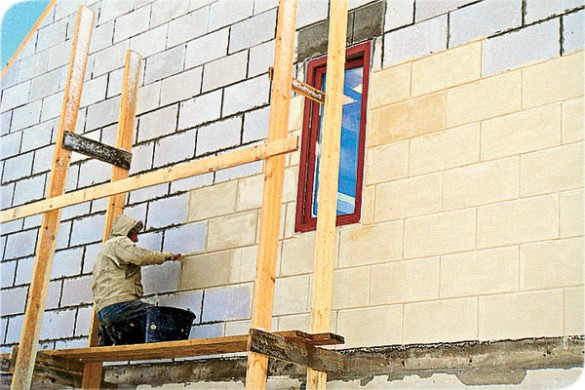
The following factors lead to moisture being trapped inside the wall:
- plastering external or internal walls with plaster with low vapor permeability;
- finishing raw walls with a siding facade;
- covering wet walls with vinyl wallpaper;
- lack of ventilation in the room in the first years of operation;
- applying waterproofing to a damp wall;
- improper design of windows (lack of window sills).
It should be understood that excess moisture should not be locked in the wall. If the wall is finished from the inside with plaster with a high polymer content, then the moisture will go outside, where it will inevitably encounter frosty air in the first winter. And vinyl wallpaper will give the same effect.
Another common mistake when operating new gas-block houses is the lack of ventilation or proper ventilation. Living is not complete without the use of water, and water, as usual, leads to the generation of steam, which supplements the moisture content of the walls. In turn, excess moisture will creep out due to temperature differences in cold weather, which will lead to its accumulation on the outside of the wall. What will happen from its contact with frosty air is known.
And also some self-builders install windows without window sills, which causes condensation to flow down the wall. This leads to the wall gradually getting wet and cracking in the cold.
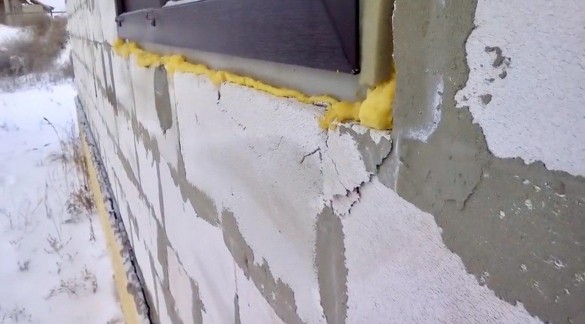
About fragility
The aerated block is a large-format building material, and it requires a stable foundation that will not exceed a relative settlement difference of more than 0.002. That is no more than 2 mm per 1 meter of foundation. Such deformation is acceptable and will not lead to cracks in unreinforced masonry.
It is recommended to build a house from gas blocks on a monolithic strip foundation or slab. Construction on a prefabricated foundation made of FBS is also allowed but with the obligatory presence of a monolithic strapping belt on top. In simple words, you need to ensure the immobility of the foundation.

Considering the light weight of the gas block, you can build a house from this material on shallow foundations: strips or slabs. Here it is worth considering one feature – the impact of heaving soils on the foundation must not be allowed.
To ensure the immobility of a shallow foundation, a cushion of non-heaving material should be made under its base:
- coarse sand;
- crushed stone;
- gravel-sand mixture.
If the soil on the site is saturated with groundwater, then you need to make a drainage that will remove the water from the pillow. It should be understood that a dry pillow is not subject to frost heaving. If there is moisture in the cushion and the soil freezes, the foundation will begin to move and thereby subject the aerated concrete wall to destruction.
As for the myths about aerated concrete, which cannot withstand floors and should not be used to build buildings higher than two floors, then everything is simple. If the wall began to collapse under the ceiling, then you need to thank the miracle builder who advised you to buy a cheaper gas block. Low-quality handicraft blocks can collapse under load. This factor is also influenced by the choice of brand of aerated concrete block.
Factory gas block is divided into three types:
- structural;
- structural and thermal insulation;
- thermal insulation.
Each type has its bearing capacity and density. If, without understanding the issue, you place a heavy ceiling on a heat-insulating gas block, the wall will begin to collapse.
For the above reasons, aerated concrete is subject to unfounded criticism.
Strengths and weaknesses of aerated concrete
Aerated concrete blocks have some advantages and disadvantages that need to be taken into account when choosing a wall material.
Advantages
- Ease. This parameter allows you to save on the foundation since the weight of an aerated concrete house will be significantly lower than the weight of a similar brick building.
- High thermal insulation. A house made of aerated concrete retains heat well, which allows you to save on heating in winter and on cooling in summer. Compared to solid brick, aerated concrete retains heat 4 times better!
- Geometry and ease of processing. The gas block is large compared to brick, which allows you to quickly build walls. Precise geometry saves on mortar, and the easy-to-process stone structure speeds up the construction process. Precise geometry also reduces the amount of mortar in the seam, which reduces the likelihood of cold air entering the room.
- Fire resistance. Gas blocks do not burn, do not emit toxic substances when heated, and can withstand exposure to an open flame for two hours without losing their load-bearing capacity.
- Durability. The gas block is not susceptible to rotting or fungus and is not food or housing for rodents and insects. If properly maintained, a house made of aerated concrete will last more than 60 years.
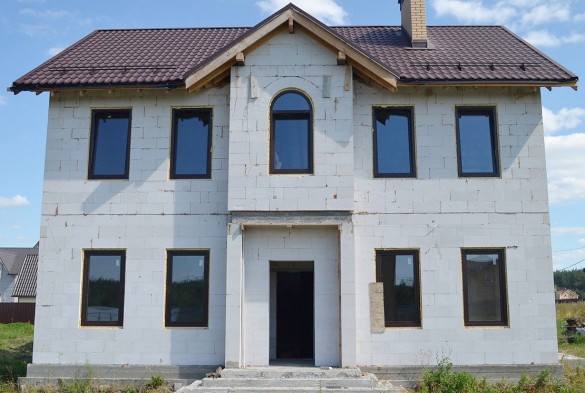
Flaws
- Low bending strength. This quality is a drawback and makes the gas block fragile and unstable to uneven loads.
- Moisture absorption. Unprotected aerated concrete absorbs up to 20% of moisture from its own weight, which reduces its thermal insulation properties, and frost can lead to the destruction of the outer layer. For this reason, it is recommended to protect the façade of the house from precipitation. When insulating the facade, you should take into account the vapor barrier properties of the exterior finish and prevent the formation of condensation in the block.
- Low burglary resistance. The gas block cannot be used for premises where valuables are stored (cash register, weapons room, remote garage).
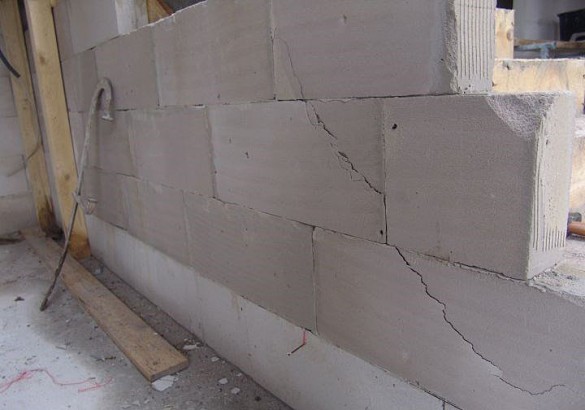
Two properties of the material remain in question – low ability to hold fastenings and noise insulation. As for fastenings, this is a solvable issue, since now there are special anchors for aerated concrete that can withstand over 400 kg of load per unit. But sound insulation is a truly controversial issue, since manufacturers claim high sound insulation qualities of their material, and users refer to increased audibility in aerated concrete houses.
Where it is not recommended to use aerated concrete block
In a separate and short section, it is worth considering areas where aerated block is not recommended for use.
Aerated concrete should not be used:
- in the manufacture of stoves, fireplaces, chimneys;
- for laying out the walls of wet rooms (baths, swimming pools) in frosty climates;
- for laying walls below ground level and walls in contact with the ground;
- in the masonry of walls in contact with sulfate and saline soils;
- for construction in earthquake-prone areas (without special conditions).

Conclusion
One conclusion suggests itself – aerated concrete is a modern and reliable material that is successfully used in the private and commercial construction of houses. A gas block will be an excellent material for the home if used correctly.
If you have not yet decided on the wall material, then weigh the pros and cons and decide whether aerated concrete is suitable for your home.

